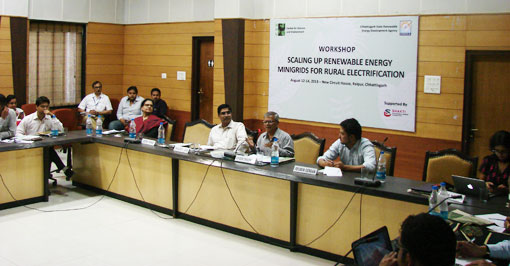Scaling up renewable energy mini-grids for rural electrification
India is struggling with the problem of providing access to energy services even after 66 years of Independence. According to the census of 2011, more than 77 million households still use kerosene for lighting. In rural India, more than 44 per cent of the households lack basic access to electricity. Even those villages that have been provided with grid power receive less than 6 hours supply in most cases.
There are at least another 9,000 villages in India where the grid may never be able due to their remoteness and geographical constraints. India is paying huge developmental costs due to its energy poverty – education, health, and economic development are at a standstill in rural India. Addressing this challenge remains a huge task for the Government of India.
The bright side to this challenge is that India has the opportunity to leapfrog to design a new energy future. The government was providing individual households in remote locations where the grid may never with basic home lighting systems powered by solar – two compact fluorescent bulbs for each household – across the country. However, the programme (Remote Village Electrification Programme) was riddled with problems on the ground from issues concerning proper maintenance of these systems to sustaining the operations after the grid reaches these villages. Poor quality of bulbs, spares, and tardy implementation at the ground level, substantiate the difficulties faced under this programme.
In the last few years, mini-grids have largely been developed by independent developers, non-governmental organizations and social businesses using external funds and very few state governments. Chhattisgarh, with a combination of funds from the centre, has pro-actively been setting up mini-grids in its remote areas. It has electrified more than 1,400 villages through mini-grids and is in the process of implementing these projects in several more villages. Hill regions like Ladakh, parts of Uttarakhand, have also electrified several villages in this manner that are notable. Uttar Pradesh recently started its own state programme on mini-grids.
The workshop
CSE organized a workshop in collaboration with Chhattisgarh Renewable Energy Development Agency, to identify the business model/ policy framework that would help in rightly incentivizing this sector. The first part of the workshop included a field visit to few notable remote villages in the Barnawapara Wildlife Sanctuary in Chhattisgarh. The visits engaged the participants into understanding the operation model employed by CREDA in order to sustain their mini-grid performance in the villages.It also gave insight into the financial model CREDA uses in developing mini-grids in rural areas.

The deliberations in the workshop included the views of several stakeholders with experience in providing these mini-grid solutions in remote villages. The discussed rationale behind the scale up of mini-grids is that there will be a reliable source of power supply and that the electrified villages will not have to wait for the conventional grid power to step up the aspirations of the rural poor. The consultations insisted on the view that urgency is required from the government in order to scale up the setting up of mini-grid projects in the country especially where it would make economic sense. The participants unanimously agreed that correct financial incentives coupled with good transmission infrastructure at the tail end of the grid are the need of the hour.
The Ministry of New & Renewable Energy is in the process of finalising the Rural Energy Access Programme which will redesign the energy future of rural India. This programme will primarily push for community-based power plants with the optimized technology for the region that would provide low cost solutions.
It was concluded in the discussions that these programmes need to be efficiently incentivized from the centre to make them sustainable over the life cycle of the power plant. Moreover, these mini-grids would have to be technically sound in order to export surplus power into the grid and import power whenever demand exceeds the capacity of the local mini-grid.
Event Schedule:
August 12: Field visit to remote villages near Raipur
August 13 & 14: Deliberations on issues related to mini-grid development in India
Meeting venue: New Circuit House, Civil Lines, Raipur

Share this article